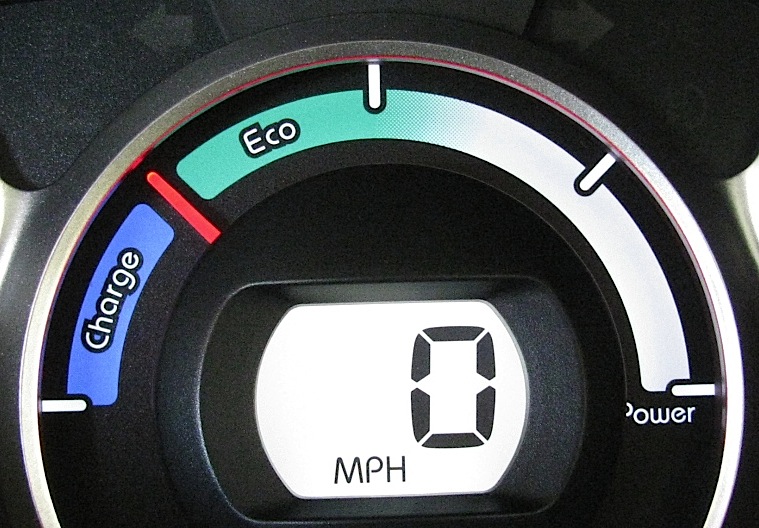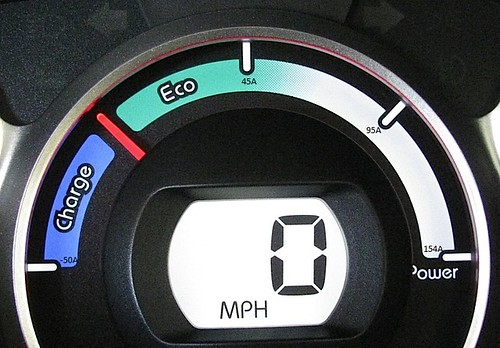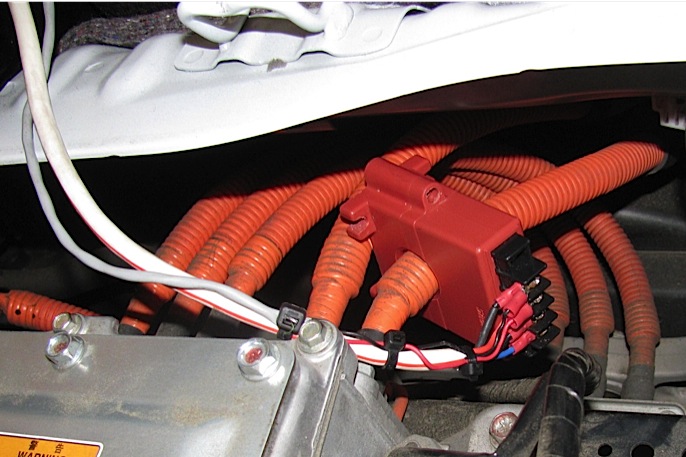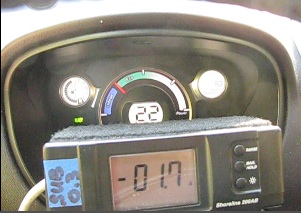The question on the table is: what is the maximum regeneration in the iMiEV relative to the maximum power draw?

This gauge seems to be nothing more than a damped analog ammeter with a pretty background, showing colors instead of numbers.
Maximum power draw has the needle all the way to the right (white zone "Power"); maximum regeneration has the needle pegged all the way to the left (blue zone "Charge"). Mitsubishi calls it the Energy Usage Indicator, and I had previously suggested that we call it a Power Gauge, ... maybe Eco Gauge is a cutsier title.
Anyway, if the display is linear, then it would appear that maximum regeneration shown is only 1/3 of the maximum that can be drawn. I don't think this is correct, as my impression is that there is more retardation (e.g., when lightly touching the brakes and thus adding even more regen) even when the needle is pegged all the way to the left in the blue zone.
Does anyone have any data on this?
Probably the only way to find out is to clamp a CT (current transformer) onto one of the battery wires...
The reason for bringing this up is my attempt to quantify energy usage as part of the hypermiling discussions...
Edit 7/15/12: added "and Consumption" to thread title.

This gauge seems to be nothing more than a damped analog ammeter with a pretty background, showing colors instead of numbers.
Maximum power draw has the needle all the way to the right (white zone "Power"); maximum regeneration has the needle pegged all the way to the left (blue zone "Charge"). Mitsubishi calls it the Energy Usage Indicator, and I had previously suggested that we call it a Power Gauge, ... maybe Eco Gauge is a cutsier title.
Anyway, if the display is linear, then it would appear that maximum regeneration shown is only 1/3 of the maximum that can be drawn. I don't think this is correct, as my impression is that there is more retardation (e.g., when lightly touching the brakes and thus adding even more regen) even when the needle is pegged all the way to the left in the blue zone.
Does anyone have any data on this?
Probably the only way to find out is to clamp a CT (current transformer) onto one of the battery wires...
The reason for bringing this up is my attempt to quantify energy usage as part of the hypermiling discussions...
Edit 7/15/12: added "and Consumption" to thread title.




























